Great Design Plant: Ericameria Laricifolia
The dark green foliage of this Southwestern native creates an attractive backdrop throughout the year. But once the temperatures begin to drop and the days shorten, turpentine bush (Ericameria laricifolia) transforms, painting the landscape with golden drifts of yellow color in fall.
This extremely drought-tolerant shrub has aromatic foliage that smells like turpentine when crushed. Turpentine bush easily handles hot, dry summers and cold winter temperatures down to 5 degrees Fahrenheit (minus 15 degrees Celsius). In fact, it’s hard to find a shrub that needs so little attention in the drought-tolerant landscape. Give it a spot in full sun and well-drained soil, and it will reward you with dark green color and golden yellow flowers in fall.
Not in the southwestern U.S.? Browse plants native to other regions of the U.S.
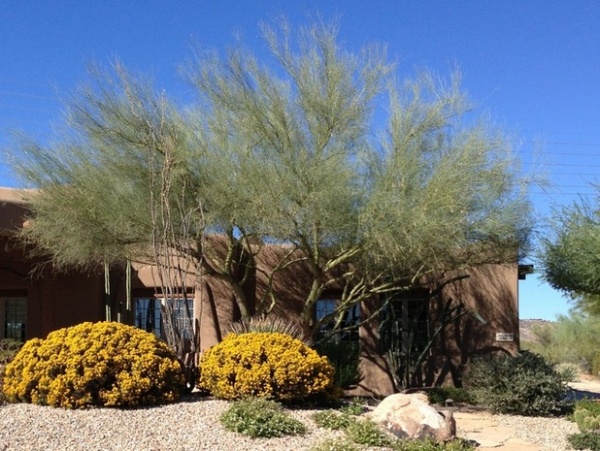
Botanical name: Ericameria laricifolia (syn. Haplopappus laricifolia)
Common names: Turpentine bush, turpentine brush
Origin: Native to the Chihuahuan and Sonoran desert regions of California, Arizona, New Mexico, Texas and Mexico
Where it will grow: Hardy to 5 degrees Fahrenheit, or minus 15 degrees Celsius (USDA Zone 7; find your zone)
Light requirement: Full sun to filtered shade
Water requirement: Extremely drought-tolerant once established, but looks best when watered monthly in summer and every other month in winter
Mature size: 3 feet tall and 5 feet wide
Benefits and tolerances: Extremely drought-tolerant; attracts butterflies in fall; resistant to deer and rabbits
Seasonal interest: Golden yellow flowers in fall
When to plant: Fall or spring
Shown: Turpentine bush growing underneath the canopy of a little leaf palo verde (Parkinsonia microphylla)
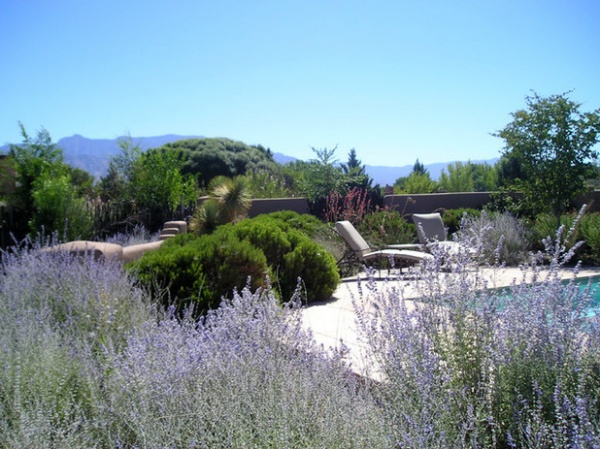
Distinguishing traits. The small, needle-like leaves are ½ inch long, and from far away the plants resemble juniper shrubs. The foliage is covered in a sticky resin, which gives off the smell of turpentine when touched. It is this sticky resin that helps contribute to the plant’s extreme drought tolerance, but it also makes turpentine bush slightly flammable; plant it at least 20 feet away from structures.
The aromatic leaves of this Southwestern native make it resistant to both deer and rabbits.
Shown: Bright green turpentine bush growing behind Russian sage (Perovskia atriplicifolia).
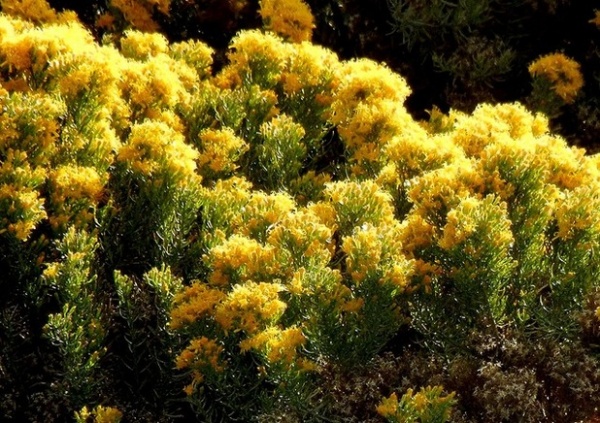
The evergreen foliage provides a welcome splash of bright green color in the landscape throughout the year. With the arrival of fall, turpentine bush undergoes a dramatic transformation, as small yellow flowers almost completely cover the green leaves.
There is some variety in the type of flowers produced by turpentine bush. Plants that come from the Chihuahuan Desert region have small petals (rays) on the flowers, while the Sonoran Desert natives don’t.
Shown: The flower heads of the Sonoran native turpentine bush, which has no petals
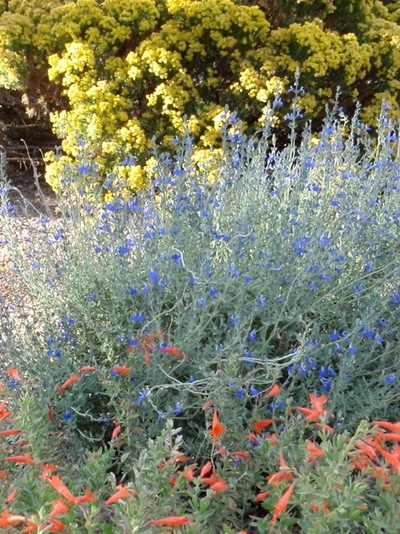
The flowers are ¼ inch long, and their color can vary from bright yellow to a deeper, golden yellow color.
Once flowering has finished, light brown seeds are left behind for a few weeks. The seed heads will eventually drop on their own, but a light shearing will get rid of them quickly, for those who find them unattractive.
Maintenance is almost nonexistent, other than infrequent deep watering. Too much water will cause this plant to become lanky and unattractive. Prune it down to the ground in early spring every few years to get rid of old, woody growth and keep it compact and attractive.
Shown: Turpentine bush blooming behind germander sage (Salvia chamaedryoides) and California fuchsia (Epilobium canum)
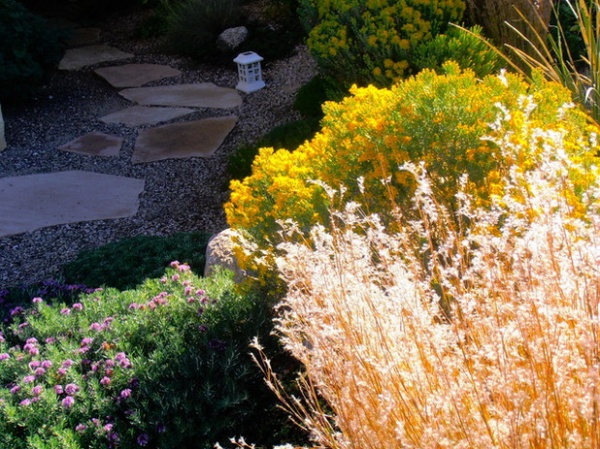
How to use it. Turpentine bush can provide an attractive bright green backdrop in the landscape.
To create striking color contrast, team it with plants in shades of gray, such as ‘Blue Bells’ (Eremophila hygrophana ‘Blue Bells’), candelilla (Euphorbia antisyphilitica), shrubby germander (Teucrium fruticans) or wooly butterfly bush (Buddleja marrubiifolia).
For a colorful fall display, plant it alongside pink muhly grass (Muhlenbergia capillaris), whose burgundy plumes will light up the golden yellow flowers of turpentine bush.
Because it is a Southwestern native, turpentine bush is a popular choice for revegetating recently disturbed desert areas, and can also be found in desert landscapes with natural themes.
Plant it in groups of three or five for maximum impact.
Shown: Turpentine bush growing alongside little bluestem (Schizachyrium scoparium) and wall germander (Teucrium chamaedrys ‘Prostratum’)
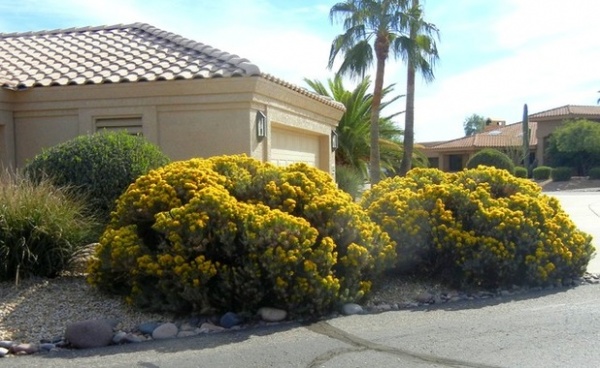
Planting notes. Select a spot in full or even reflected sunlight for the best appearance. While it will grow in filtered shade, it will have a stragglier shape and less flowering, so full sun is best. Well-drained soil is a must. No other special care is needed.
More
Browse plants native to other regions of the U.S.
See how to grow more plants with yellow blooms












